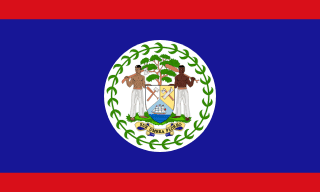Belize - Geography

Here, let us take a look at the Geography of Belize. Only country in Central America without a coastline on the North Pacific Ocean. Mother's mean age at first birth is (), whereas, the Maternal mortality ratio is 67 deaths/100,000 live births (2023 est.)
Geographical data of Belize
| Location | Central America, bordering the Caribbean Sea, between Guatemala and Mexico |
|---|---|
| Geographic coordinates | 17 15 N, 88 45 W |
| Map references | Central America and the Caribbean |
| Tarrain | flat, swampy coastal plain; low mountains in south |
| Natural Resources | arable land potential, timber, fish, hydropower |
| Natural Hazards | frequent, devastating hurricanes (June to November) and coastal flooding (especially in south) |
| Irrigated Land | 35 sq km (2012) |
| Major rivers (by length in km) | |
| Major aquifers | |
| Land Boundaries | 542 km |
| Border Countries | Guatemala 266 km; Mexico 276 km |
| Coastline | 386 km |
| Climate | tropical; very hot and humid; rainy season (May to November); dry season (February to May) |
| Area | |
| Total Area | |
| Land Area | 22,806 sq km |
| Water Area | 160 sq km |
| comparative Area | slightly smaller than Massachusetts |
| Maritime Claims | |
| Territorial sea | 12 nm in the north, 3 nm in the south |
| Exclusive economic zone | 200 nm |
| Elevations | |
| Highest point | Doyle's Delight 1,124 m |
| Lowest point | Caribbean Sea 0 m |
| Mean elevation | 173 m |
| Land Use | |
| Agricultural land | 8% (2022 est.) |
| Agricultural land: arable land | arable land: 4.4% (2022 est.) |
| Agricultural land: permanent crops | permanent crops: 1.4% (2022 est.) |
| Agricultural land: permanent pasture | permanent pasture: 2.2% (2022 est.) |
| Forest | 55% (2022 est.) |
| Other | 37% (2022 est.) |
Population Distribution
Approximately 25% to 30% of the population lives in the former capital, Belize City; over half of the overall population is rural; population density is slightly higher in the north and east
People and Society
In Belize, the different Ethnic groups are such that we have: Mestizo 52.9%, Creole 25.9%, Maya 11.3%, Garifuna 6.1%, East Indian 3.9%, Mennonite 3.6%, White 1.2%, Asian 1%, other 1.2%, unknown 0.3% (2010 est.)
| Population | |
|---|---|
| Pop growth rate | 1.47% (2024 est.) |
| Birth rate | 17.7 births/1,000 population (2024 est.) |
| Death rate | 5 deaths/1,000 population (2024 est.) |
| Health expenditure | |
| Physicians Density | |
| Hospital bed Density | 1 beds/1,000 population (2018 est.) |
| Total fertility rate | 2.05 children born/woman (2024 est.) |
| Gross reproduction rate | 1 (2024 est.) |
| Contraceptive prevalence rate | 51.4% (2015/16) |
| Est married women (ages 15-49) | 64.3% (2023 est.) |
| Literacy | |
| Education expenditures | |
| Net Migration rate | 2 migrant(s)/1,000 population (2024 est.) |
| Nationality | Belizean | Belizean(s) |
| Languages | |
| Religions | Roman Catholic 40.1%, Protestant 31.5% (includes Pentecostal 8.4%, Seventh Day Adventist 5.4%, Anglican 4.7%, Mennonite 3.7%, Baptist 3.6%, Methodist 2.9%, Nazarene 2.8%), Jehovah's Witness 1.7%, other 10.5% (includes Baha'i, Buddhist, Hindu, Church of Jesus Christ, Muslim, Rastafarian, Salvation Army), unspecified 0.6%, none 15.5% (2010 est.) |
| Age Structure | |
| 0-14 years | 27.7% (male 58,529/female 56,811) |
| 15-64 years | 66.7% (male 135,903/female 141,503) |
| 65 years and over | 5.5% (2024 est.) (male 11,463/female 11,580) |
| Dependency Ratios | |
| Total dependency ratio | 49.9 (2024 est.) |
| Youth dependency ratio | 41.6 (2024 est.) |
| Elderly dependency ratio | 8.3 (2024 est.) |
| Potential support ratio | 12 (2024 est.) |
| Median Age | |
| Total | 26.8 years (2024 est.) |
| Male | 26.4 years |
| Female | 27.2 years |
| Urbanization | |
| Urban population | 46.6% of total population (2023) |
| Rate of urbanization | 2.3% annual rate of change (2020-25 est.) |
| Major urban areas (Pop) | 23,000 BELMOPAN (capital) (2018). |
| Sex Ratio | |
| At birth | 1.05 male(s)/female |
| 0-14 years | 1.03 male(s)/female |
| 15-64 years | 0.96 male(s)/female |
| 65 years and over | 0.99 male(s)/female |
| Total population | 0.98 male(s)/female (2024 est.) |
| Infant Motality | |
| Total | 11.3 deaths/1,000 live births (2024 est.) |
| Male | 12.4 deaths/1,000 live births |
| Female | 10.1 deaths/1,000 live births |
| Life Expectancy at birth | |
| Total population | 74.3 years (2024 est.) |
| Male | 72.6 years |
| Female | 76.1 years |
| Drinking Water Sources | |
| Improved: urban | urban: 100% of population |
| Improved: rural | rural: 99.4% of population |
| Improved: total | total: 99.7% of population |
| Unimproved: urban | urban: 0% of population |
| Unimproved: rural | rural: 0.6% of population |
| Unimproved: total | total: 0.3% of population (2020 est.) |
| Sanitation facility acess | |
| Improved: urban | urban: 99.1% of population |
| Improved: rural | rural: 95.7% of population |
| Improved: total | total: 97.3% of population |
| Unimproved: urban | urban: 0.9% of population |
| Unimproved: rural | rural: 4.3% of population |
| Unimproved: total | total: 2.7% of population (2020 est.) |
| Alcohol consumption per capita | |
| Total | 5.93 liters of pure alcohol (2019 est.) |
| Beer | 3.88 liters of pure alcohol (2019 est.) |
| Wine | 0.68 liters of pure alcohol (2019 est.) |
| Spirits | 1.19 liters of pure alcohol (2019 est.) |
| Other alcohols | 0.17 liters of pure alcohol (2019 est.) |
| Tobacco use | |
| Total | 8.3% (2025 est.) |
| Male | 14.8% (2025 est.) |
| Female | 1.8% (2025 est.) |
| Child marriage | |
| Women married by age 15 | 6.3% (2016) |
| Women married by age 18 | 33.5% (2016) |
| Men married by age 18 | 22.2% (2016) |
Demographic profile
All Important Facts about Belize
Want to know more about Belize? Check all different factbooks for Belize below.









